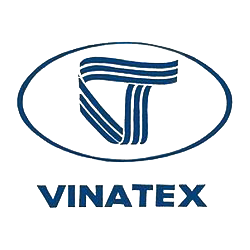National Assembly Chairman Nguyen Sinh Hung and Deputy Prime Minister Vu Van Ninh attended SCIC's 10th anniversary ceremony
- Hits: 6310
National Assembly Chairman Nguyen Sinh Hung and Deputy Prime Minister Vu Van Ninh attended SCIC’s 10th anniversary ceremony
The State Capital Investment Corporation (SCIC) celebrated its 10th anniversary (2005 – 2015) and received the Labour Order, First Class, on October 19, 2015.
National Assembly Chairman Nguyen Sinh Hung, Deputy Prime Minister Vu Van Ninh along with representatives from ministries, local authorities and international institutions joined the event and congratulated SCIC.
After 10 years, SCIC have so far received the state ownership at nearly 1,000 companies with total state capitalization of over 8,700 billion dongs, of which 6 are equitized state corporation.

National Assembly Chairman Nguyen Sinh Hung granted the Labour Order, first class, to SCIC.
In accordance with the Prime Minister’s Decision and instruction, in the period of 2015-2016, 20 groups, corporations will transfer the state ownership to SCIC. Among nearly 1,000 companies transferred to CIC, the average ratio of return on equity (ROE) stands around 15-17%. Through divestment process, the ratio of state capital was reduced from 36% to 22%.
SCIC’s capital investment activities were effective, helping maintain and develop the state capital, resulting in the accumulative after-tax profit of over 30,000 billion dongs. Compared to the starting point, revenues increased 65 times, state budget contribution increased 41 times...
Up to now, SCIC’s divestment generated profit of over 5,360 billion dongs. SCIC’s current portfolio (including transferred companies and invested ones) comprises 230 companies with total book value of 17,000 billion dongs and market value of nearly 78,000 billion dongs. At present, SCIC’s equity capital is around 35,000 billion dongs.
SCIC’s development target till 2020 is to become the Government’s strategic investor and financial corporation with the assets of 22.5 billion USD; and vision to 2030 is to become a sizable financial institution in the region and play the role of the State’s tool in investment and mainting the controlling position in key industries/sectors with total asset of over 46 billion USD.
In addition, the state owned companies’ support, arrangement and reform achieved significant results. SCIC has become the most successful institution in terms of equitization with a high equitization ratio, 90% one-member limited liability companies transferred to SCIC were equitized, the rest are being consolidated to achieve the highest results when equitized.

National Assembly Chairman Nguyen Sinh Hung sticked the Labour Order, first class, to SCIC’s traditional flag. Photo by: Nhan Sáng-TTXVN
In evaluating SCIC’s model, Ms Victoria Kwakwa, Country Director, World Bank in Vietnam, commented that SCIC’s model has been modified to meet the specific condition of Vietnam when the Government started to accelerate the equitization process. This model brought a number of benefits to Vietnam Government in the management of state assets at companies.
Addressing the event, Deputy Prime Miniter Vu Van Ninh acknowledged SCIC’s achievement and positive contribution to the state owned companies’ reform, arrangement and restructuring and socio-economic development of the country.

Deputy Prime Minister Vu Van Ninh delivered a speech at the ceremony.
Given the requirement of the country’s socio-economic development in the context of comprehensive international integration, Deputy Prime Minister request SCIC actively report and bring forward to the Communist Party, State the proposal of consolidating and developing SCIC’s model; continue the state ownership handle from designated companies, especially groups, corporation under the Decision of the Prime Minister. Besides, SCIC needs to accelerate the divestment process in those companies that the State does not need to keep; effectively fulfill the state shareholder’s role in significant, effective companies that are operating in industries/sectors that the State needs to keep; step by step expand its financial investment activities; prepare for the improvement in state capital investment in the coming time.























